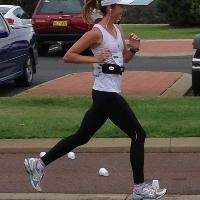Changing running technique could cause more harm than good

Changing your running technique from a rearfoot strike (landing on your heel first) to a forefoot strike (landing on the ball of your foot first) might not offer the performance and injury avoidance benefits that running blogs would have you believe.
Research conducted within The University of Western Australia's School of Sport Science, Exercise and Health suggests doing so may actually have adverse repercussions.
According to a study recently published in Medicine and Science in Sport and Exercise, those with a natural rearfoot strike had to produce nearly 20 per cent more work in their legs after changing to the unfamiliar forefoot strike technique. Furthermore, the risk of injury to the ankle and hip significantly increased when running technique was changed to the unfamiliar forefoot strike.
The research findings led the article's lead author, Sarah Stearne, to conclude: "If you are a rearfoot strike runner (which 75 per cent of people are) stick to what you know. Changing to a forefoot strike technique could increase your chance of injury and will most likely slow you down."
However, the research also found that those who naturally use a forefoot strike running technique may benefit from changing to a rearfoot strike. Forefoot strikers changing to the unfamiliar rearfoot strike technique reduced the work done by the leg by 10 per cent and load on the ankle by a third. Although this switch is much less common among runners, it could prove a useful strategy during rehabilitation from an ankle injury.
"If you are plagued by a persistent injury, changing foot strike technique does alter the loads on your joints, so it may be useful. However, while lowering the risk of certain injuries, the risk of acquiring others is increased, so be sure to take it slow and seek advice from a qualified running coach," Ms Stearne said.
The study "Joint Kinetics in Rearfoot versus Forefoot Running: Implications of Switching Technique" provides the first comprehensive evidence regarding the consequences of changing foot strike technique. Future research is to focus on the long term effects of changing technique.
More information: "Joint Kinetics in Rearfoot versus Forefoot Running: Implications of Switching Technique." Stearne, Sarah M.; Alderson, Jacqueline A.; Green, Benjamin; Donnelly, Cyril J.; Rubenson, Jonas. Medicine & Science in Sports & Exercise, 4 February 2014. DOI: 10.1249/MSS.0000000000000254
















